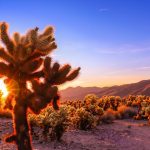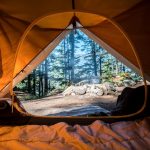Planning Your Night Camping Trip
Night camping can be an exciting adventure. It lets you see nature in a whole new way. Getting ready takes some work, but it’s worth it.
Choosing the Right Location
Pick a spot that’s safe and legal for night camping. Look for places away from busy roads and bright lights. National parks and forests often have great spots. Check if you need permits. Find a flat area for your tent. Stay clear of dead trees that could fall. Look for natural windbreaks like hills or rock formations. Bring maps and know how to use them. A GPS device can help too. Make sure your chosen spot has clean water nearby or bring your own.
Preparing Your Camping Checklist
Make a list of everything you’ll need. Don’t forget:
- Tent and sleeping bags
- Flashlights and extra batteries
- Camping Lanterns
- First aid kit
- Food and water
- Warm clothes
- Fire starter and matches
Pack a good camping stove if fires aren’t allowed. Bring bug spray and sunscreen. Don’t forget toilet paper and a trowel. A multi-tool can be very handy. Bring extra socks to keep your feet dry. Pack everything in waterproof bags. Double-check your list before you leave.
Understanding Weather Conditions
Check the weather forecast before you go. Night temps can drop quickly. Bring layers to stay warm. Know the signs of incoming storms. Avoid camping if there’s a risk of severe weather. Bring rain gear just in case. Wind can make it feel colder, so plan for that. In hot areas, it might still be warm at night. Bring a tarp for shade or rain protection. Know how to set up your tent for different weather. Be ready to change plans if the weather turns bad.
Essential Camping Gear
Getting the right gear is key for a fun and safe camping trip. Here’s what you need to know about tents, sleeping gear, clothing, and food essentials.
Selecting a Tent and Sleep System
Your tent is your home away from home. Pick one that’s big enough for you and your gear. A 2-person tent works well for solo campers. For families, go bigger.
Look for a waterproof tent with a good rainfly. Set it up at home first to practice.
Don’t forget a ground cloth to put under your tent. It helps keep water out.
For sleeping, bring a sleeping bag rated for the temps you’ll face. A sleeping pad adds comfort and insulation from the cold ground.
Pillows make sleeping easier. Bring one from home or get a small camp pillow.
Packing the Right Clothing
Dress in layers for changing weather. Start with a base layer to wick sweat. Add an insulating mid-layer like fleece. Top it off with a waterproof jacket.
Pack extra socks. Wet feet can ruin a trip. Bring sturdy shoes for hiking.
Don’t forget a warm hat and gloves for chilly nights. Sunglasses and a sun hat protect you during the day.
Bring clothes you can get dirty. Leave the fancy stuff at home.
Cooking and Food Essentials
A camping stove lets you cook hot meals. Small propane stoves are easy to use. Bring fuel and matches.
Pack a pot, pan, plates, and eating utensils. Don’t forget a can opener and knife.
Bring food that’s easy to make. Pasta, rice, and canned goods work well. Bring snacks for energy on hikes.
Keep food cold in a good cooler. Use ice packs or frozen water bottles.
Bring plenty of water. Pack a water filter or purification tablets as backup.
Setting Up Camp
A good camp setup makes your outdoor adventure comfy and fun. You’ll need a cozy shelter, a safe fire area, and smart food storage. These basics help you enjoy nature while staying safe.
Establishing Shelter
Pick a flat spot for your tent. Clear away rocks and sticks. Set up your tent facing away from the wind. Use all the tent stakes to keep it secure. Put a tarp under the tent to stay dry.
Inside, lay out your sleeping pad and bag. Fluff up your bag to make it warmer. Keep your gear organized in stuff sacks.
Put a lantern or headlamp where you can easily reach it. Hang a clothesline to dry wet clothes.
Organizing the Campfire Area
Choose a spot at least 15 feet from tents and trees. Clear a 10-foot circle of leaves and twigs. Use a fire pit if there’s one.
Gather three types of wood:
- Tinder (small twigs, dry grass)
- Kindling (small sticks)
- Fuel wood (larger branches)
Keep a bucket of water nearby. Never leave your fire alone. Put it out completely before bed.
Food Preparation and Storage
Set up your camp kitchen away from your tent. Use a folding table or flat rock as a prep area. Keep a clean water jug for cooking and washing.
Store food in airtight containers or bear canisters. Hang food bags from a tree, at least 10 feet high and 4 feet from the trunk.
Cook on a camp stove or over the fire. Clean up right after meals. Pack out all trash to avoid attracting animals.
Nighttime Activities and Entertainment
Night camping opens up a world of fun after dark. You can enjoy nature in new ways and play exciting games around the campfire.
Enjoying the Outdoors After Dark
Nighttime brings a special magic to camping. Take a moonlit hike to see nocturnal animals. Look for owls, bats, and other creatures that come out at night. Bring flashlights, but try to use them sparingly to protect your night vision.
Stargazing is a must-do activity. Lay out a blanket and look up at the sky. Try to spot constellations or planets. You might even see shooting stars if you’re lucky.
For a twist on classic games, play nighttime versions. Try flashlight tag or glow-in-the-dark hide and seek. These games are extra thrilling in the dark forest.
Games and Storytelling by the Campfire
Gather around the campfire for classic camping fun. Tell spooky ghost stories that will give everyone chills. Take turns adding to the tale to make it even more exciting.
Play charades or act out shadow puppets using the firelight. These games get everyone laughing and involved. Bring a deck of cards for endless game options.
If someone knows how to play guitar, have a sing-along. Don’t worry if you’re not a great singer – it’s all about having fun together.
Try some quiet activities too. Listen to the night sounds of crickets and frogs. See who can stay silent the longest while enjoying nature’s soundtrack.
Staying Safe and Comfortable
Night camping can be fun and exciting when you’re well-prepared. With the right gear and know-how, you can enjoy a cozy and secure outdoor experience under the stars.
Ensuring Proper Lighting
Bring a mix of light sources for your nighttime needs. Pack a headlamp for hands-free tasks like cooking or reading. Bright Lanterns are great for lighting up your campsite. Don’t forget extra batteries!
Keep a small flashlight in your tent for quick access. Glow sticks can mark paths and tent lines to avoid tripping. Solar-powered lights are eco-friendly options that charge during the day.
Use red light modes when stargazing. This helps preserve your night vision while still allowing you to see.
Keeping Warm Through the Night
Choose the right sleeping bag for the expected temperatures. A bag rated 10°F lower than the lowest expected temp is a good rule of thumb. Use a sleeping pad to insulate you from the cold ground.
Wear dry, warm layers to bed. A hat can help keep heat from escaping through your head. Thermal underwear and thick socks add extra warmth.
Before bed, do some light exercises to warm up. A hot drink can also help raise your body temperature. Keep a water bottle filled with hot water near your feet for added coziness.
Addressing Health and Hygiene
Pack a first aid kit with basics like bandages, pain relievers, and any personal medications. Know how to use everything in your kit before you go.
Bring biodegradable soap and hand sanitizer for cleaning. A quick-dry towel takes up less space and dries faster than regular towels.
Don’t forget toiletries like toothbrush, toothpaste, and toilet paper. Use a small trowel to dig catholes for bathroom needs, following Leave No Trace principles.
Stay hydrated, even at night. Keep water easily accessible in your tent. Use a refillable water bottle to cut down on waste.
Breaking Camp and Leaving No Trace
Packing up your campsite properly helps protect nature. It’s important to clean up thoroughly and minimize your impact on the environment.
Cleaning and Packing Up
Start by gathering all your gear and belongings. Check the area carefully for any items you might have missed. Pack everything securely in your bags or vehicle.
Take down your tent and shake it out gently. Fold it neatly to avoid damage. Roll up your sleeping bags and pads.
Look for any trash or food scraps around your site. Pick up even tiny bits of litter. Pack out all trash, including food waste.
Extinguish your campfire completely if you had one. Douse it with water and stir the ashes. Make sure it’s cold to the touch before leaving.
Environmental Responsibility
Follow the “Leave No Trace” principles to protect nature. Avoid damaging plants or disturbing wildlife.
Return any rocks or sticks you may have moved. Scatter leaf litter over areas where you removed vegetation.
If you dug catholes for human waste, fill them in completely. Pack out used toilet paper in a sealed bag.
Erase any signs that you camped there. Brush out footprints and smooth over tent spots. Nature should look untouched when you leave.
Good campers take only photos and leave only footprints. Your goal is to preserve the outdoors for others to enjoy.





